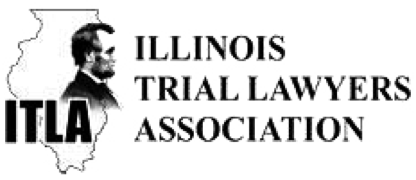The recent publicity arising out of the McDonald’s coffee case and the airline disaster in Pittsburgh seems to have given new life to opponents of contingency fees for compensating plaintiffs’ lawyers. In fact, YLS Co-Editor Jackson Williams (YLS Editor’s Column; “Is It Time to Rethink Contingency Fees?” CBA Record, Sept. 1994) argued that in certain cases such fees are too high. This argument is particularly popular with the insurance and health care industries. However, there are a number of sound reasons why contingency fees have been an essential ingredient in our civil justice system for over 100 years. I devote my practice to the representation of injured people, but I spent four years at Baker & McKenzie representing corporate defendants and insurance companies. With that perspective I would like to explain why the contingency fee system is fair and in the best interest of the public.
The judiciary has always had the right to supervise attorney’s fees. In Estate of Weeks, 255 Ill. App. 3d 345, 627 N.E. 2d 736 (3d Dist. 1994), the circuit court judge refused to enforce a one-third contingency fee agreement and awarded the attorney $3,075 instead of $10,000. However, the Third District reversed and awarded the attorney the full $10,000 writing that the contingency fee agreements are “the poor man’s key to the courthouse door” and are “rooted in our commitment to equal justice for both those of moderate means and the wealthy.” Setting aside for a moment the very important issue of access to the courts, it is important to not that the Third District is preserving the sanctity of contracts. If such contracts are not enforced, then couldn’t we expect attorneys who lose contingency fee cases to seek hourly fees from a sympathetic judge? And lawyers are not the only ones whose right to contract would be affected. Sellers typically contract to pay their Realtors a contingency fee. If the Realtor found a buyer quickly, should that fee be reduced? If finding that buyer was usually time-consuming, should the Seller have to pay more? Should people who have not made a claim on their health insurance be able to obtain a refund of the premiums paid? Of course not, because the parties agreed how to allocate the risks, they had a contract, and their contract should be enforced.
Our economic system would collapse without the right to contract. Yet insurance companies, corporations and the medical profession do not hesitate to attack the right of an injured person to contract with his lawyer, ironically, the medical profession and health insurers are now in the grips of a struggle to avoid regulation and price controls when in Illinois those same groups successfully lobbied to limit attorney’s fees in medical malpractice cases in 1985. (735 ILCS 5/2-1114 (1985)). The parties seeking to limit contingency fees have only one goal in mind: to make certain tort cases less economically feasible to pursue, thereby making it more difficult and often impossible for those clients to find lawyers. This hurts everyone’s access to the legal system. This helps tortfeasors and their insurers keep the money that should be used to compensate the victims.
The people that attack contingency fees are often most troubled by the specter of newly wealthy plaintiff’s lawyers, anxious, in William’s words, to “show up at the high school reunion in a Mercedes,” who take an easy case on contingency and earn “as much money as Ryne Sandberg made per pop fly.” This is a common caricature. In fact, the reality is more complicated. The cases are more difficult, the verdicts are lower, and the risks of substantial loss are higher.
In essence, the argument against contingency fees is that a lawyer ought to charge an hourly rate or reduce the contingency fee charged for a case recently described as follows: “A client with extensive injuries and huge medical bills, an iron-clad case of liability of the defendant, and generous insurance coverage from a reputable carrier.” (Williams’ commentary). Surely this would be any lawyer’s dream case. There are several reasons, however, why the “dream case” is often just a dream.
“Dream Cases” Are Exceptionally Rare
The “dream case” scenario is so extraordinarily rare that it cannot serve as the basis for a thoughtful discussion of contingency fees. While the media would have us believe that juries are unthinkingly giving large sums of money to plaintiffs and that personal injury lawyers are routinely earning huge fees for little or no work, the facts do not bear that out. Most people would be surprised by the actual percentage of personal injury cases tried to verdict in this country and won by the plaintiff. A recent study by Jury Verdict Research, a legal publishing firm in Horsham, PA found that the plaintiff’s chances were between 57 and 63% in any year between 1961 and 1991. And far from being a recent explosion of pro-plaintiff judgments, the plaintiff’s chances fell to 52% in 1992, down from 63% as recently as 1989. In addition, a brief look at the Cook County Jury Verdict Reporter reveals that the medical community and product manufacturers win 70 to 80% of the cases that are tried.
Most Cases Are Surprisingly Complex
Cases which appear to the untrained attorney to be simple are often quite complex. For example, assuming the client was injured in an auto accident, if the insurance coverage is limited, is there underinsured coverage available? How do you settle with the direct defendant without prejudicing the right to underinsured coverage? Is there another defendant who is liable for the plaintiff’s injuries? Is there a product liability action or an action against the designer of the roadway where the incident occurred? Is there a dram shop defendant? Is there umbrella coverage or can other insurance policies be pursued? What is the plaintiff’s obligation with respect to medical liens and claims by his or her health insurance carrier for reimbursement?
Failure to correctly answer these questions and other can make any lawyer’s “dream case” into a nightmare of professional liability.
Even cases which are simple from a legal point of view often take an enormous amount of work. The common misconception about plaintiff’s cases, applied by Williams, is that you simply “gather the appropriate documents, send a demand letter, make a few phone calls to haggle with the adjuster and voila!, you settle the case with only a few hours work.” That is not what I have found. Even in the simplest cases I usually find myself going to depositions and court hearings, as the defendants fight among themselves as to liability or while the insurance companies keep my client’s money in their accounts until the last possible moment before trial. It is extremely difficult to gauge which case will settle easily and without years of work. Undoubtedly, with the benefit of hindsight, some cases turn out to be profitable and some do not. However, separating the profitable from the unprofitable is considered easy only by the armchair critics that have never represented plaintiffs for a living.
As the Third District recognized Estate of Weeks, it is not appropriate to employ “a hindsight analysis” and conclude that the plaintiff’s lawyer who has done his job quickly and efficiently is only entitled to fees in the amount of his hourly rates. That court wrote: “such a consideration is clearly erroneous. If the attorneys had expended the same amount of time on the case, but recovered nothing for their client, the court surely would not have awarded them fees on a quantum merit basis. We find nothing unreasonable in the terms of the contingent fee agreement….”
Who Objects to Contingency Fees?
Perhaps the most interesting thing about the debate over contingency fees is the people making the objection. Interestingly, it is not the injured people who pay the fees, but the defendants and insurers who want to make it more difficult for the injured to retain a lawyer. There is no similar movement to pass laws to make it more difficult for the defendants to hire lawyers or to limit the defense lawyers’ hourly rates. Yet evidence exits that “averaging over cases won and lost, the effective hourly earnings of attorneys paid on a contingent basis are similar to the hourly earnings of defense attorneys paid by the hour.” (Patricia Munch Danzon, Rand Corporation, Institute for Civil Justice, “Contingent Fees for Personal Injury Litigation.” Summary at viii (R-2458-HCA, June 1980)).
Critics argue that the contingency fee system encourages lawyers to file frivolous lawsuits. This has no basis in logic, since “the fact that the [contingency] fee depends on winning provides an incentive to screen out cases with little merit-an incentive that is lacking with an hourly fee.” (Id.) The attorney paid on a contingency fee basis also has an incentive to work efficiently, to keep the motions and other filings to a minimum, and to learn to judge the merit of a case, rather than to treat a case as a never-ending meal ticket. In the vast majority of the cases filed, the attorneys are paid by the hour. For example, in 1989 only five% of the 17.3 million new civil cases filed in state courts nationwide were tort cases. Presumably the balance were cases in which the attorneys were paid by the hour. And as for frivolous lawsuits. One study showed that less than two% of all the physicians in Cook County were defendants in 36% of the medical malpractice litigation filed between 1972 and 1986. Natalie Miller et al., Medical malpractice: Crisis of Litigation or Crisis of Negligence? (Health Resources Inc., Mar. 18, 1987).
The conservative Manhattan Institute has proposed to apply the attorney’s contingency fee only to the increment between the amount ultimately received in settlement or in judgment and the amount offered by the defendant within 60 days of the plaintiff’s demand letter. If the plaintiff accepts the 60-day offer, the attorney would be paid on an hourly basis. If that settlement is rejected, contingency fees would be charged only against net recoveries in excess of the early offer.
This insidious proposal does not stand up to scrutiny. There is nothing to prevent a fair-minded defendant from making a fair offer within 60 days of the demand letter under our present system. In almost all cases that does not happen and it would not happen under the Manhattan Institute’s proposal. Under the present system the defendants will wait until the eve of trial – testing the plaintiff’s resolve, arguing with co-defendants, or simply drawing interest – to offer the money. The Manhattan Institute’s proposal would allow the defendant to drive a wedge between the plaintiff and his lawyer. Assume that a case has a fair settlement value of $100,000 and projected expenses of $10,000. By making an early offer of $50,000, the defendant effectively cuts the plaintiff’s lawyer with the same risk of losing his time and the full $10,000 in expenses if he proceeds to trial – as he must after the client predictably rejects the low offer. The Manhattan Institute’s proposal is an open attempt to make representing injured people less profitable. The predictable economic result would be fewer and less talented lawyers fighting for victim’s rights and more plaintiffs settling their cases at less than their true value. All for the benefit of defendants and their insurance companies.
The Clients Prefer Contingency Fees
In the years that I have been a plaintiff’s trial lawyer, never once, even in a seemingly simple “dream case” has a client ever asked about the possibility of paying me an hourly fee instead of a contingency fee. There are two simple reasons for this.
First, precious few of the injured people I see are wealthy enough to afford the hourly rates of $150-$250 paid by corporations. The contingency fee structure opens the courthouse door to people of average means-and frankly, it is those people not the wealthy few who are most likely to be injured by poor working conditions or substandard medical care.
Second, the client wants a contingency fee so he or she can eliminate all risk of having to pay legal fees without the money to pay them. The client wants the attorney to take the risk and the attorney agrees to do so, betting on his skill, his reputation, and his ability to pursue the case with success. The client understands that to transfer his risk to the lawyer, he must pay a premium. Opponents of the contingency fee focus on the successful case where the attorney seemingly experiences a windfall. This is both the most popular approach to attacking contingency fees and the most misleading. I have never seen an article about the plaintiff’s attorney who advanced thousands of dollars in expenses for his client, devoted hundred of hours to the case, stayed up nights and worked weekends preparing for trial, and ultimately received nothing for the jury. And it is not just the lawyer’s time at risk. Experienced plaintiffs’ lawyers know that the client never repays the expenses, and in complicated cases, expenses can be hundreds of thousands of dollars. That cost can be borne easily by an insurance company, but not by the average injured person. Clients are right to shift the risk of such a loss to their lawyers.
The contingency fee system is fair to the public and is crucial to the proper representation of the injured plaintiff. Remember, the plaintiffs did not ask to be injured. They do not have on staff the experienced attorneys and other resources which corporate defendants have. They cannot afford to bet their homes that they will win their cases and will be able to afford hourly legal fees. They deserve access to the best and most motivated attorneys possible. I will not collect a contingency fee from a client who comes to me with nothing in controversy. I would never take a contingency fee where the insurance company had already offered the full policy limits to settle before I became involved. However, if my skill, reputation, and risk exposure are instrumental in obtaining the result, then I expect the client to pay my fee. The inverse is also true. I lose the case, I won’t call the client and ask for a fee. That is the essence of the contingency fee.






